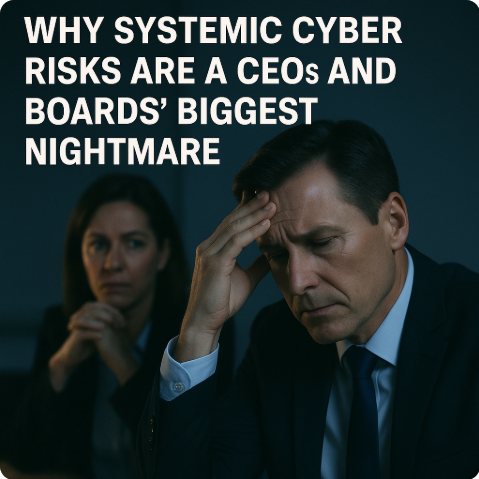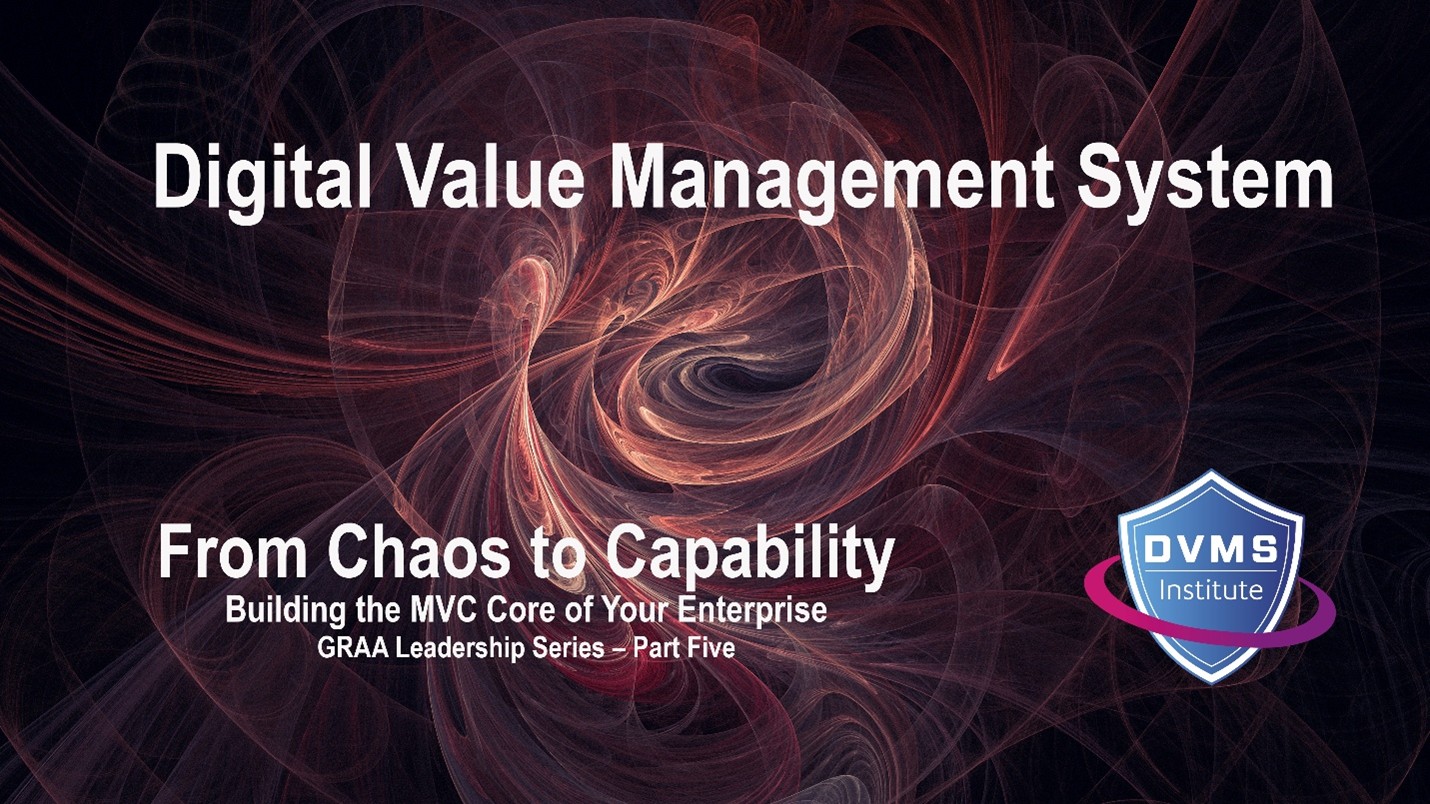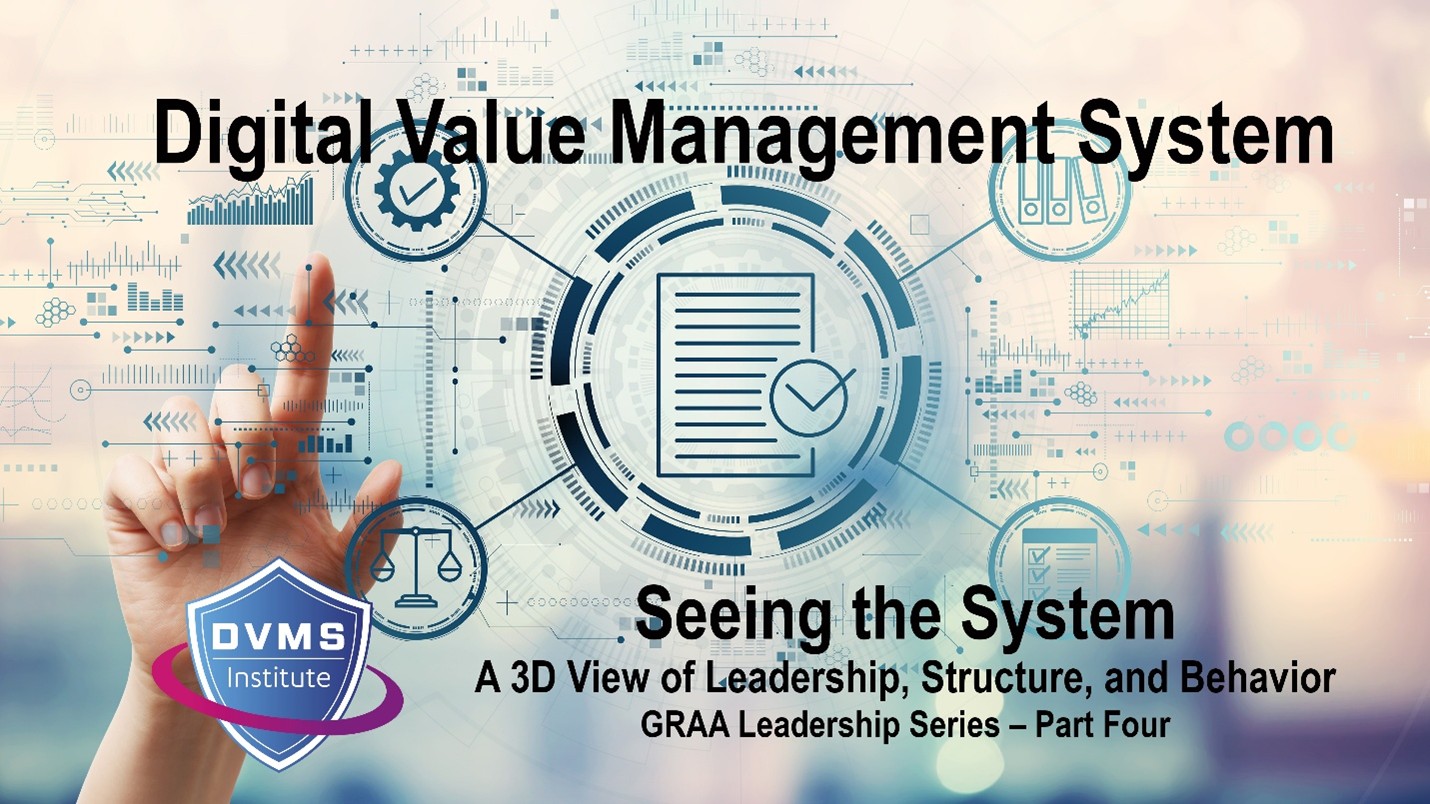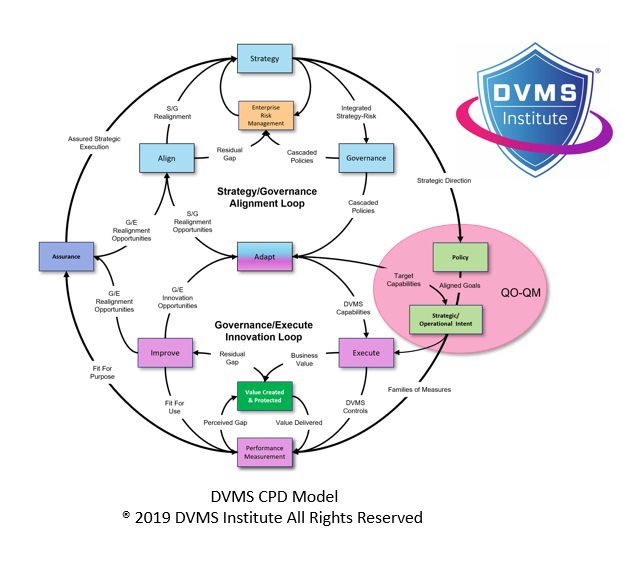Why Systemic Cyber Risks Are the CEOs and Boards’ Biggest Nightmare
Rick Lemieux – Co-Founder and Chief Product Officer of the DVMS Institute
Introduction: The New Boardroom Nightmare
For decades, CEOs and boards worried about traditional business risks—competition, market downturns, supply disruptions. Today, those concerns remain, but they have been overshadowed by a far more complex and menacing threat: systemic cyber risk.
Unlike isolated IT failures or even major breaches of the past, systemic cyber risks ripple across interconnected supply chains, financial systems, and digital ecosystems. They are unpredictable, difficult to contain, and capable of crippling organizations within a matter of hours.
It is no surprise, then, that systemic cyber risk is consistently ranked as a top concern for CEOs and boards globally. What executives crave most is assurance that their organizations can anticipate, withstand, and recover from such disruptions. Without it, they remain sleepless, anxious, and exposed.
Why Cyber Risk Has Become Systemic
Cyber risk has always existed, but several forces have elevated it from a technical problem to a systemic business threat.
First, hyperconnectivity means no organization operates in isolation. Cloud adoption, third-party vendors, critical infrastructure interdependencies, and global supply chains mean that one weak link can create ripple effects across entire ecosystems.
Second, attack sophistication has exploded. Nation-states, organized crime, and AI-powered attackers can exploit vulnerabilities with unprecedented speed and scale. Even well-defended companies find it nearly impossible to keep adversaries out permanently.
Third, digital dependency has transformed cyber incidents into business crises. When digital services go down, revenue halts, customer trust erodes, and regulators demand answers. The stakes are no longer limited to IT teams—they reach into the boardroom.
Finally, regulatory accountability has expanded. Rules such as the SEC’s cyber disclosure requirements, the EU’s DORA and NIS2, and global privacy laws make boards personally responsible for governance and assurance of resilience. This combination of forces elevates cyber risk into the systemic category—threatening not just systems but strategy, reputation, and survival.
What Keeps CEOs and Boards Awake at Night
CEOs and directors rarely lose sleep over operational issues that can be delegated. What haunts them are risks that could fundamentally destabilize the enterprise or their own accountability. Systemic cyber risk checks all those boxes.
- Loss of Trust: Boards fear that one catastrophic cyber event could shatter years of brand equity. Trust, once lost, is almost impossible to regain.
- Regulatory Consequences: Leaders worry about fines, sanctions, and personal liability when regulators discover resilience gaps.
- Investor Confidence: Shareholders demand assurance that the company is secure and resilient. A cyber-induced stock plunge keeps executives on edge.
- Business Continuity: CEOs fear being unable to answer a simple question in a crisis: “Can we still deliver our critical services tomorrow?”
- Blind Spots: Perhaps the most unsettling concern is not knowing what they don’t know. Fragmented reporting from IT, GRC, and Cybersecurity leaves executives uncertain whether risks are being managed comprehensively.
In short, what keeps them up at night is the fear of systemic collapse without credible assurance that resilience is in place.
Why Current Approaches Fall Short
Despite billions of dollars spent on cybersecurity, ITSM, and GRC, CEOs and boards still feel vulnerable. The reason is simple: existing programs are fragmented, compliance-driven, and overly focused on the past.
- Cybersecurity teams focus on technical defense—firewalls, detection, and response. They rarely translate threats into business impact that boards can understand.
- ITSM teams measure tickets closed and uptime, but not whether digital services can withstand systemic shocks.
- GRC teams produce audit evidence and compliance reports, but these prove past activity, not future resilience.
These silos provide pieces of the puzzle, but never the whole picture. Executives remain in the dark, and their insomnia continues.
What CEOs and Boards Really Need
To sleep peacefully at night, executives need more than activity reports. They need integrated, outcome-driven assurance that systemic cyber risk is being governed, managed, and mitigated. This assurance must answer three simple but critical questions:
- Are we resilient? – Can we continue delivering critical services if disrupted?
- Are we compliant? – Will regulators and auditors accept our evidence?
- Are we trusted? – Do our customers, partners, and investors believe we are secure and resilient?
Providing clear, credible answers to these questions requires a new approach to governance and assurance.
Building a Governance and Assurance System for Resilience
The most effective way to provide boards with peace of mind is to implement an integrated, adaptive, and outcomes-oriented governance and assurance system—one that unifies ITSM, GRC, and Cybersecurity into a single, cohesive framework. Such a system provides:
- Integration: Breaking down silos so that IT operations, risk management, and cybersecurity report into a unified system of governance. This creates transparency and eliminates duplication.
- Adaptability: Embedding continuous monitoring and iterative improvement, so the system evolves with emerging threats, new technologies, and regulatory changes.
- Outcome Orientation: Measuring what matters—resilience, compliance, and trust—rather than technical activities. Boards care about whether the enterprise can withstand systemic shocks, not how many patches were applied.
- Culture and Accountability: Embedding risk awareness, leadership accountability, and resilience behaviors into daily operations ensures that resilience is not just a policy but a lived practice.
This approach transforms governance from a compliance checklist into a strategic capability. It moves the board’s conversation from “Are we compliant?” to “Are we resilient, compliant, and trusted enough to survive disruption?”
The Role of Frameworks and Overlay Models
Fortunately, organizations do not need to start from scratch. Frameworks like NIST Cybersecurity Framework 2.0, with its new Govern function, and integrated, adaptive, and culture-driven governance and assurance overlay systems like the Digital Value Management System® (DVMS) provide ready-made roadmaps.
- NIST CSF 2.0 ensures cybersecurity is tied to enterprise strategy and accountability, not just technical controls.
- DVMS integrates ITSM, GRC, and Cybersecurity into a governance and assurance overlay, embedding the delivery of resilient, compliant, and trusted digital outcomes into the organizational DNA.
- ISO 31000 and DORA emphasize risk-based governance and operational resilience.
By adopting such frameworks in an integrated manner, organizations can give boards the one thing they desperately want: assurance they can trust.
The Peace of Mind Promise
When CEOs and boards receive outcome-focused assurance, they can rest easier. They know that systemic risks are being managed holistically, that regulators will accept their evidence, and that customers will continue to trust their digital services.
This peace of mind is not about eliminating cyber risk—no system can do that. It is about building confidence that the organization can survive and thrive despite disruptions. In a world defined by uncertainty, this is the only true path to resilience.
Conclusion: From Fear to Confidence
Systemic cyber risk will always exist and will continue to be what keeps CEOs and boards awake at night. But sleepless nights are not inevitable. Organizations that implement integrated, adaptive, and outcomes-driven governance and assurance systems can provide their leaders with the assurance they crave.
Such systems transform fragmented IT, GRC, and Cybersecurity programs into a resilience engine—one that protects value, satisfies regulators, and sustains digital trust. For CEOs and boards, that assurance is priceless. It is the difference between leading in fear and leading with confidence. And it is the only way they will finally get a peaceful night’s sleep.
About the Author

Rick Lemieux
Co-Founder and Chief Product Officer of the DVMS Institute
Rick has 40+ years of passion and experience creating solutions to give organizations a competitive edge in their service markets. In 2015, Rick was identified as one of the top five IT Entrepreneurs in the State of Rhode Island by the TECH 10 awards for developing innovative training and mentoring solutions for boards, senior executives, and operational stakeholders.
Traditional best-practice approaches to IT Service Management (ITSM), Governance, Risk and Compliance (GRC), and Cybersecurity are insufficient to manage the resilience, compliance, and trust requirements of today’s complex digital ecosystems.
The DVMS Cyber Resilience Professional Certified Training programs teach Organizations the skills to evolve any best-practice program into an integrated, adaptive, and culture-driven Digital Value Management Governance and Assurance System® (DVMS) capable of transforming systemic cyber risk into operational resilience.
For ITSM
The DVMS elevates ITSM from a process-aligned service-delivery program into an integrated, adaptive, and culture-driven governance and assurance overlay system, ensuring the delivery of high-performance and resilient digital business outcomes.
For GRC
The DVMS elevates GRC from a compliance checklist activity to an integrated, adaptive, and culture-driven governance and assurance overlay system, ensuring the resilient, compliant, and trusted digital business outcomes regulators expect.
For Cybersecurity
The DVMS elevates any cybersecurity program (NISTCSF, ISO, etc.) from a control-centric defense program into an integrated, adaptive, and culture-driven governance and assurance overlay system, transforming systemic cyber risk into compliant and trusted operational resilience.
By adopting a DVMS, organizations are positioned to:
- Maintain Operational Stability Amidst Constant Digital Disruption
- Deliver Digital Value and Trust Across A Digital Ecosystem
- Satisfy Critical Regulatory and Certification Requirements
- Leverage Cyber Resilience as a Competitive Advantage
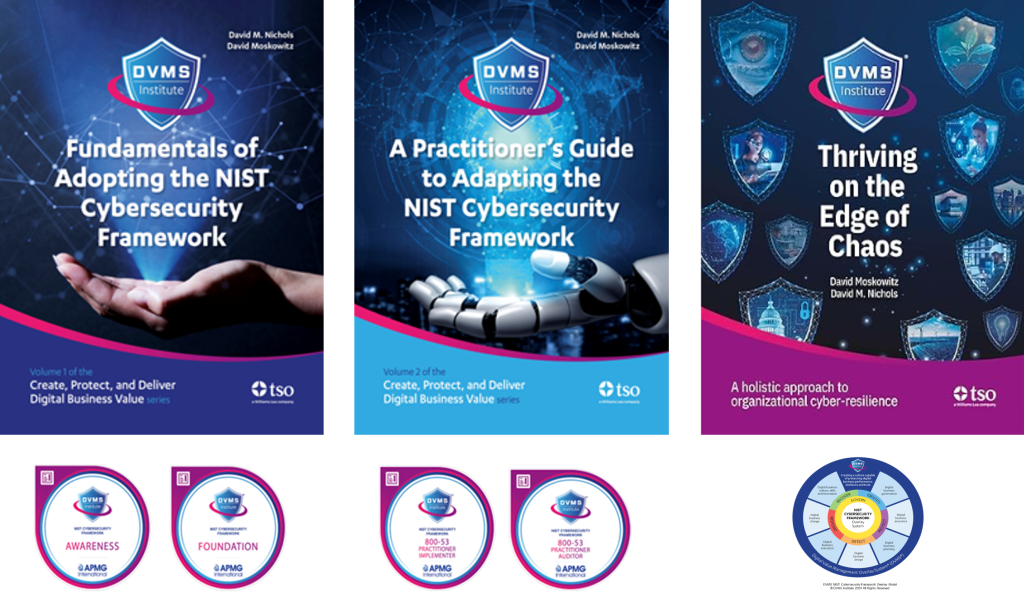
DVMS Explainer Videos
- Architecture Video: David Moskowitz explains the DVMS System
- Case Study Video: Dr. Joseph Baugh Shares His DVMS Story.
- Overlay Model – What is an Overlay Model
- MVC ZX Model – Powers the CPD
- CPD Model – Powers DVMS Operations
- 3D Knowledge Model – Powers the DVMS Culture
- FastTrack Model – Enables A Phased DVMS Adoption
Digital Value Management System® is a registered trademark of the DVMS Institute LLC.
® DVMS Institute 2025 All Rights Reserved

